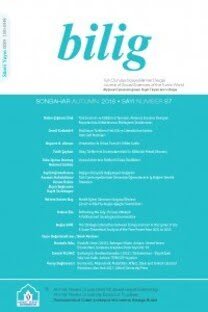Türk Runik Alfabesindeki “Çift Ünsüz” İşaretleri Üzerine
On “Dual Consonant” Symbols in Turkic Runic Alphabet
Old Turkic, Turkic Runic alphabet, “dual consonant” symbols, nasal consonants, place of articulation -ç,
- ISSN: 1301-0549
- Yayın Aralığı: Yılda 4 Sayı
- Başlangıç: 1996
- Yayıncı: Ahmet Yesevi Üniversitesi
Yeniçağ Osmanlı İmparatorluğunda Bir Apolojist/Reddiye Örneği
Mahtumkulu’nun Şiirlerinde Mert ve Namert Tipi
Nasreddin Hoca’yı “Kültürlerarası Temas” İmkânı İçin Yeniden Okumak
Türk Runik Alfabesindeki “Çift Ünsüz” İşaretleri Üzerine
Tehlike Altındaki Dil: Sarı Uygurca
Kırgız Türkçesinde Anlam Kaymasına Uğrayan Arapça Kelimeler
Osmanlı Sarayı’nda Bir Sırp Prenses:Mileva Olivera Lazarevic
Bir Sözlüksel Bilmece: Redhouse’un Kayıp Türkçe Sözlüğüne Ne Oldu?
